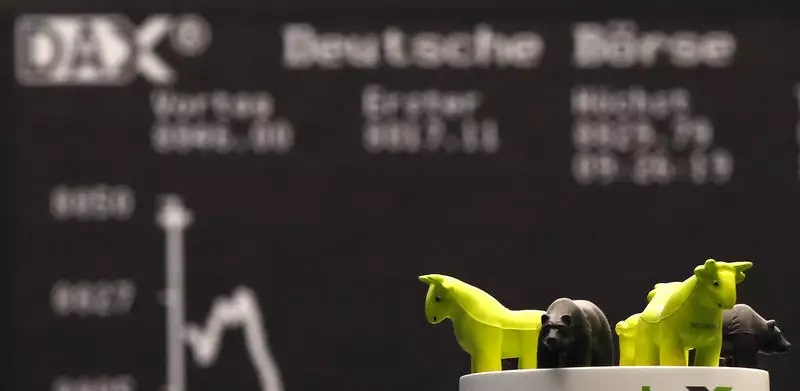As the curtain falls on 2024, European stock markets have experienced a slight dip, signaling a common end-of-year trend where investors often look to capitalize on profits accrued throughout the year. This trading activity paints a vivid picture of investor sentiment, reflecting a cautious yet strategic approach as the year concludes. Notably, the DAX index in Germany has shown almost no movement, while France’s CAC 40 and the UK’s FTSE 100 have experienced minor declines of 0.1% and 0.3%, respectively. This subdued trading environment is largely in line with expectations, as market participants adjust their portfolios ahead of the festive season and subsequent market closures.
The pan-European STOXX 600 index, a barometer for the overall market performance in the region, has witnessed a marginal dip but remains poised for a notable annual gain of approximately 5.5%. This figure reflects the resilience in European markets, particularly buoyed by the German DAX’s impressive climb of over 19%. On the flip side, the CAC 40 has not fared as well, recording a downturn of 2.6% amid varying economic pressures. This performance disparity highlights the different economic trajectories and investor confidence across the region, prompting a deeper analysis into the factors influencing these trends.
Complicating this financial landscape is the recent economic data indicating that Spain’s annual EU-harmonized inflation rate has risen to 2.8% in December, compared to 2.4% in November. Such inflationary pressure poses a unique challenge for the European Central Bank (ECB), which had recently cut interest rates in hopes of spurring economic growth amidst stagnation. However, the warning signs of rising inflation may necessitate a more cautious approach going forward. ECB Governing Council member Robert Holzmann’s comments suggest that while there may not be immediate plans for interest rate hikes, future cuts could be delayed, reflecting a complex balancing act between stimulating growth and curbing inflation.
Turning to corporate developments, Siemens Healthineers saw a 1% decrease in stock value following Chief Financial Officer Ralf Thomas’s announcement regarding a strategic review of Siemens’ majority stake in its medical technology division. This news emphasizes the ongoing scrutiny of corporate structures in response to broader economic signals while underlining the profitability stakes in the health tech sector, which continues to be vital in the face of global healthcare challenges.
Finally, the oil markets are also rewriting their narratives as we near the end of 2024. With crude prices inching downwards—WTI at $70.53 a barrel and Brent at $73.69—there’s a palpable concern about demand, particularly in China, the world’s largest oil consumer. Market analysts are closely observing these fluctuations, as both benchmarks are projected to close the year with significant losses, reflecting the broader implications of economic performance in major economies.
As we bid farewell to 2024, the European stock markets, affected by profit-taking, inflationary pressures, and sector-specific challenges, encapsulate a year marked by resilience amid economic complexities. Investors will undoubtedly be keen to track how these dynamics evolve in the coming year.

